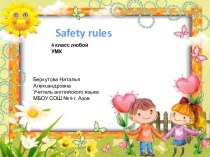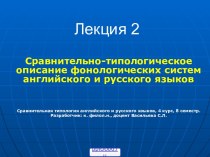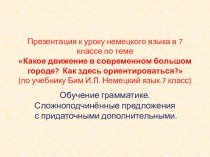- Главная
- Разное
- Бизнес и предпринимательство
- Образование
- Развлечения
- Государство
- Спорт
- Графика
- Культурология
- Еда и кулинария
- Лингвистика
- Религиоведение
- Черчение
- Физкультура
- ИЗО
- Психология
- Социология
- Английский язык
- Астрономия
- Алгебра
- Биология
- География
- Геометрия
- Детские презентации
- Информатика
- История
- Литература
- Маркетинг
- Математика
- Медицина
- Менеджмент
- Музыка
- МХК
- Немецкий язык
- ОБЖ
- Обществознание
- Окружающий мир
- Педагогика
- Русский язык
- Технология
- Физика
- Философия
- Химия
- Шаблоны, картинки для презентаций
- Экология
- Экономика
- Юриспруденция
Что такое findslide.org?
FindSlide.org - это сайт презентаций, докладов, шаблонов в формате PowerPoint.
Обратная связь
Email: Нажмите что бы посмотреть
Презентация на тему Особенности английских идиом об одежде
Содержание
- 2. IntroductionFashion is the great topic for most
- 3. The aim of the work: We would
- 4. Idiom is a phrase or an expression
- 5. Are you a fashionista? Are you in
- 6. Wear your heart on your sleeveDisplay one's
- 7. Some idioms are based on nouns +
- 8. At the drop of a hat
- 9. All idioms are united the unusual origin
- 10. Скачать презентацию
- 11. Похожие презентации
IntroductionFashion is the great topic for most of people. Most of us try to follow trendy changes, try to know some designers and brands. When we come to a shop, we look for things which can

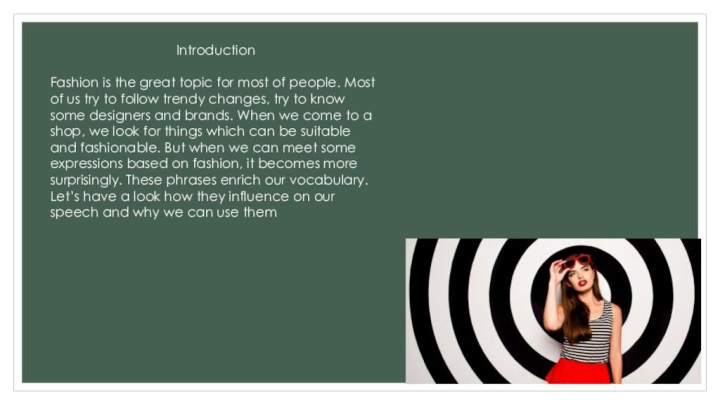
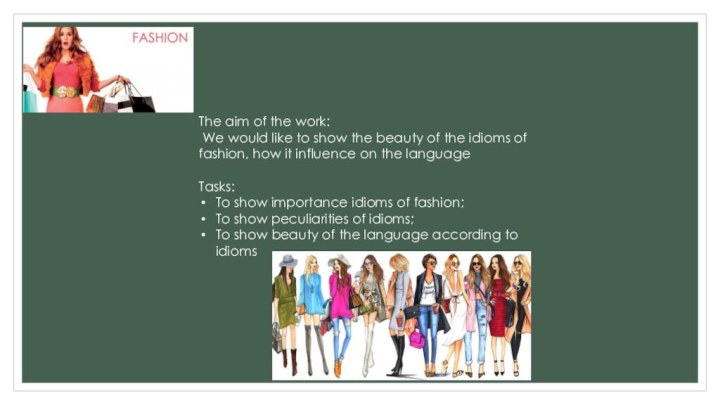
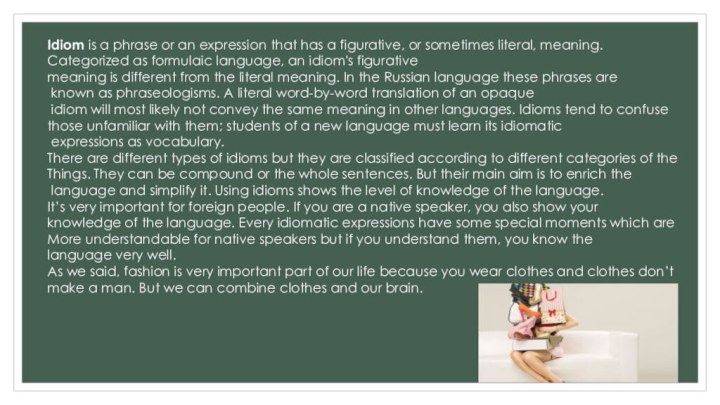
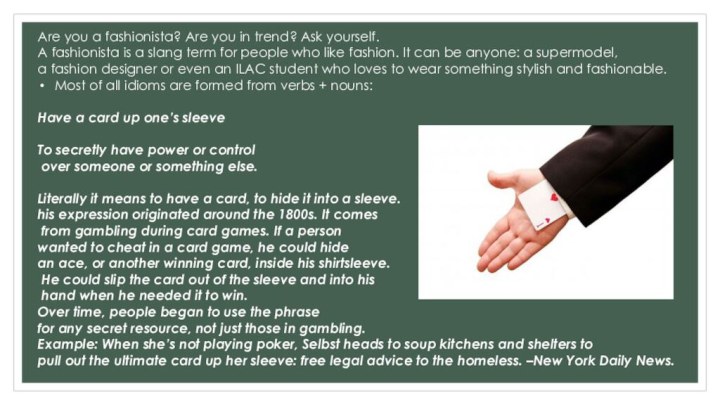

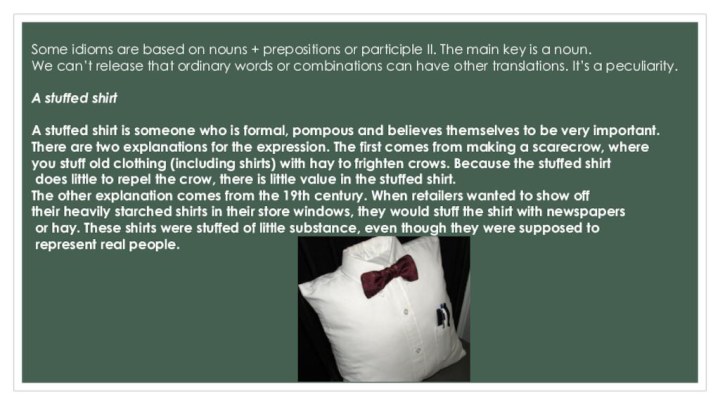
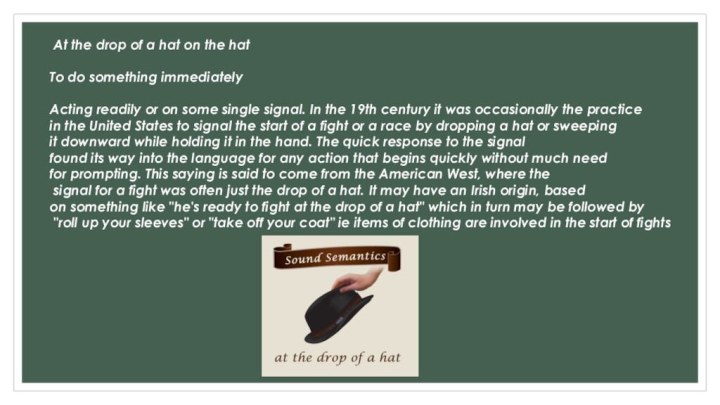


Слайд 3
The aim of the work:
We would like
to show the beauty of the idioms of fashion,
how it influence on the languageTasks:
To show importance idioms of fashion;
To show peculiarities of idioms;
To show beauty of the language according to idioms
Слайд 4 Idiom is a phrase or an expression that
has a figurative, or sometimes literal, meaning.
Categorized as
formulaic language, an idiom's figurative meaning is different from the literal meaning. In the Russian language these phrases are
known as phraseologisms. A literal word-by-word translation of an opaque
idiom will most likely not convey the same meaning in other languages. Idioms tend to confuse
those unfamiliar with them; students of a new language must learn its idiomatic
expressions as vocabulary.
There are different types of idioms but they are classified according to different categories of the
Things. They can be compound or the whole sentences. But their main aim is to enrich the
language and simplify it. Using idioms shows the level of knowledge of the language.
It’s very important for foreign people. If you are a native speaker, you also show your
knowledge of the language. Every idiomatic expressions have some special moments which are
More understandable for native speakers but if you understand them, you know the
language very well.
As we said, fashion is very important part of our life because you wear clothes and clothes don’t
make a man. But we can combine clothes and our brain.
Слайд 5 Are you a fashionista? Are you in trend?
Ask yourself.
A fashionista is a slang term for people
who like fashion. It can be anyone: a supermodel, a fashion designer or even an ILAC student who loves to wear something stylish and fashionable.
Most of all idioms are formed from verbs + nouns:
Have a card up one’s sleeve
To secretly have power or control
over someone or something else.
Literally it means to have a card, to hide it into a sleeve.
his expression originated around the 1800s. It comes
from gambling during card games. If a person
wanted to cheat in a card game, he could hide
an ace, or another winning card, inside his shirtsleeve.
He could slip the card out of the sleeve and into his
hand when he needed it to win.
Over time, people began to use the phrase
for any secret resource, not just those in gambling.
Example: When she’s not playing poker, Selbst heads to soup kitchens and shelters to
pull out the ultimate card up her sleeve: free legal advice to the homeless. –New York Daily News.
Слайд 6
Wear your heart on your sleeve
Display one's emotions
openly.
This phrase may derive from the custom at middle
ages jousting matches. Knights aresaid to have worn the colours
of the lady they were supporting,
in cloths or ribbons tied to their arms. The term doesn't date from that period though
and is first recorded in Shakespeare's Othello,
1604. In the play, the treacherous Iago's plan was to feign openness and vulnerability
in order to appear faithful
This idiom as others make us create some
images and you can wear embroidery
of a heart on your sleeve
in the real life. There is two meanings.
Слайд 7 Some idioms are based on nouns + prepositions
or participle II. The main key is a noun.
We can’t release that ordinary words or combinations can have other translations. It’s a peculiarity.
A stuffed shirt
A stuffed shirt is someone who is formal, pompous and believes themselves to be very important.
There are two explanations for the expression. The first comes from making a scarecrow, where
you stuff old clothing (including shirts) with hay to frighten crows. Because the stuffed shirt
does little to repel the crow, there is little value in the stuffed shirt.
The other explanation comes from the 19th century. When retailers wanted to show off
their heavily starched shirts in their store windows, they would stuff the shirt with newspapers
or hay. These shirts were stuffed of little substance, even though they were supposed to
represent real people.
Слайд 8 At the drop of a hat on
the hat
To do something immediately
Acting readily or on some
single signal. In the 19th century it was occasionally the practice in the United States to signal the start of a fight or a race by dropping a hat or sweeping
it downward while holding it in the hand. The quick response to the signal
found its way into the language for any action that begins quickly without much need
for prompting. This saying is said to come from the American West, where the
signal for a fight was often just the drop of a hat. It may have an Irish origin, based
on something like "he's ready to fight at the drop of a hat" which in turn may be followed by
"roll up your sleeves" or "take off your coat" ie items of clothing are involved in the start of fights
Слайд 9 All idioms are united the unusual origin and
ordinary usage. They are simple for your speech.
We
often hear them but we never think of the meaning or why we use them insteadof the known words. The language changes and gives us many opportunities to form new
Expressions. When we tell something with a mock or sarcastically, it can give born a new
Meaning of ordinary phrases. When people can take them, after that it becomes as an expression.
So we can give something new. As we said, idioms enrich the language and gives us an
opportunity to close the native speakers.
Use the idioms more often, you enrich your vocabulary.



